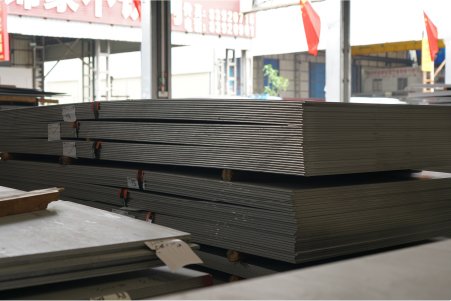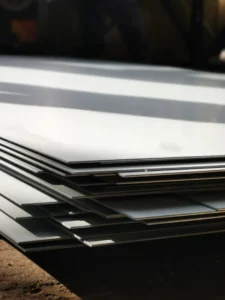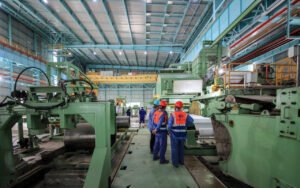Green Passivation Processes for Eco-Friendly Stainless Steel Sheet Finishing

Struggling with the high costs and environmental regulations tied to traditional stainless steel finishing? The hazardous chemicals involved, like nitric acid, create significant disposal challenges and workplace risks. You need a solution that ensures product quality while aligning with modern environmental standards and improving your bottom line.
Green passivation offers a sustainable and effective alternative. It replaces harsh chemicals with eco-friendly agents like citric acid, significantly reducing hazardous waste, enhancing workplace safety, and cutting operational costs. This method provides comparable or even superior corrosion resistance, ensuring high-quality stainless steel sheet finishing.
This shift towards sustainability is no longer a niche trend but a core business imperative. For manufacturers, contractors, and distributors, embracing greener processes1 is becoming a key competitive differentiator. In this article, I’ll share my insights on why this transition is crucial and how you can navigate it effectively.
From my vantage point at MFY, I’ve seen companies grapple with the operational and financial drag of outdated methods. The conversation is shifting from "if" to "how" we can implement greener supply chains. This isn't just about compliance; it's about building resilient, efficient, and forward-thinking operations. We'll explore the challenges of traditional methods, the benefits of eco-friendly alternatives, and a practical roadmap for implementation, backed by real-world examples from our partners across Asia and the Middle East.
What environmental challenges are associated with traditional stainless steel passivation processes?
Are you concerned that your passivation process is harming the environment and your budget? Traditional methods using nitric and chromic acids generate toxic fumes and hazardous wastewater, posing risks to employees and creating a costly waste disposal nightmare that can erode your operational efficiency and brand reputation.
The primary environmental challenges of traditional passivation stem from its reliance on hazardous materials. Processes using nitric acid release nitrogen oxide (NOx) fumes, which contribute to smog and acid rain. Furthermore, the acidic wastewater often contains dissolved heavy metals, requiring expensive and complex treatment before discharge.
These challenges create a ripple effect throughout the supply chain, impacting not just the manufacturer but also the end-user. As Global Business Director at MFY, I’ve worked with numerous clients who initially underestimated the true cost of traditional passivation. The expenses aren't just in the chemicals themselves but are heavily weighted in regulatory compliance, specialized ventilation systems, employee safety training, and, most significantly, the "cradle-to-grave" responsibility for hazardous waste. A client of ours, a large-scale kitchen equipment manufacturer in India, found their wastewater treatment costs were increasing by 15% annually due to tightening local regulations. This unpredictable overhead was making their product costing a moving target and hurting their competitiveness. They realized that the perceived "low cost" of nitric acid was a fallacy once the total cost of ownership, including environmental management and risk mitigation, was calculated. This realization is often the first step for companies seeking a more sustainable and economically stable alternative for their stainless steel finishing needs.
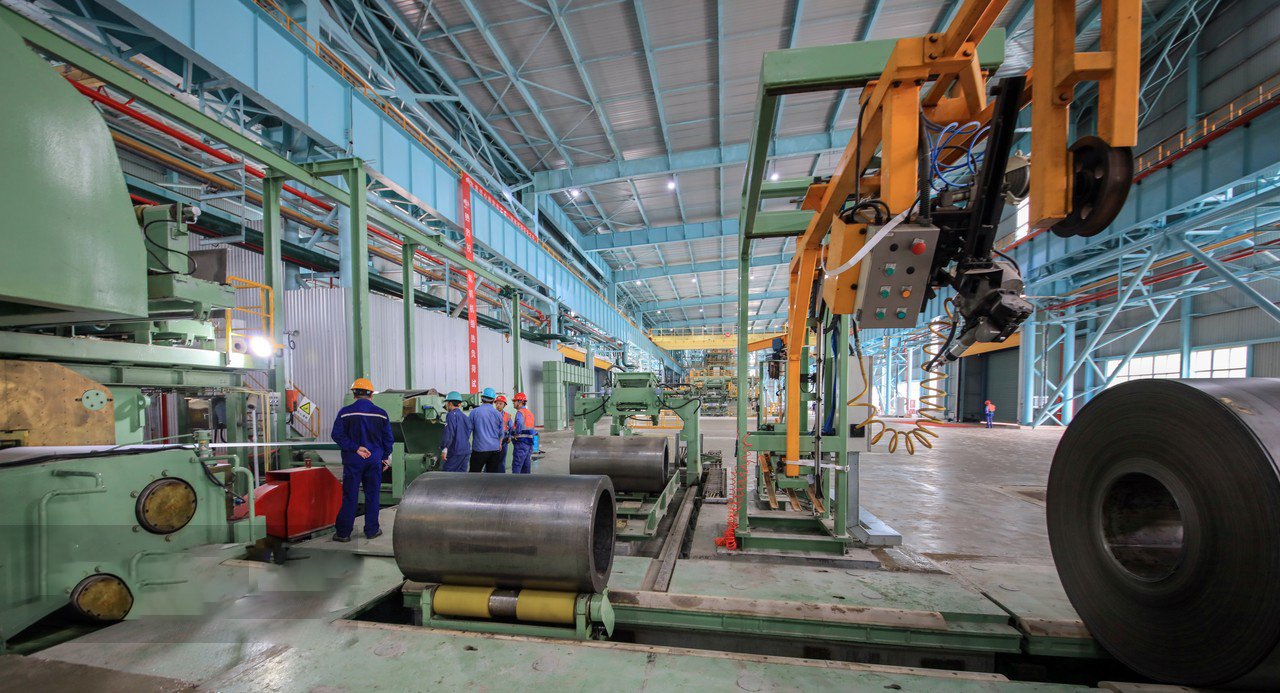
The environmental fallout from conventional passivation extends far beyond the factory floor, creating a complex web of ecological, financial, and social challenges. These methods, while effective at creating a passive layer on stainless steel sheets, do so at a significant environmental cost. The reliance on strong mineral acids, particularly nitric acid, is the primary source of these issues. The entire lifecycle, from the production of these acids to their final disposal after use, is fraught with environmental risks that modern industries can no longer afford to ignore. Understanding the specific nature of these challenges is the first step for any company looking to transition towards a more sustainable and responsible operational model. The issues are not isolated; they are interconnected, affecting air quality, water systems, and soil, while also posing direct risks to human health and creating long-term financial liabilities for businesses. At MFY, we encourage our partners to look beyond the immediate performance of the passivation process and consider its total environmental and economic footprint.
The Hidden Costs of Hazardous Waste Disposal
One of the most immediate and tangible challenges is the management of hazardous waste. The sludge and rinse water from nitric acid passivation baths are classified as hazardous materials in most jurisdictions. This is because they contain not only high concentrations of acid but also dissolved heavy metals like chromium and nickel, which are leached from the stainless steel itself. Disposing of this waste is not a simple matter of drain disposal; it requires specialized handling2, transportation, and treatment by licensed facilities. This entire process is expensive and laden with regulatory paperwork.
I recall a case with an engineering contractor in Southeast Asia who was building a new water treatment facility. They were performing passivation on-site for their stainless steel pipes and tanks. Initially, they hadn't budgeted correctly for waste disposal. The cost quoted by a certified disposal company was nearly four times what they had estimated, significantly impacting their project's profitability. This forced them to halt operations and re-evaluate their entire finishing strategy mid-project.
These costs are not static; they are subject to market volatility and increasing regulatory pressures. As landfill space becomes scarcer and environmental laws become stricter, the cost of hazardous waste disposal is on a permanent upward trend. This creates a significant financial liability for manufacturers. Any accidental spill or improper disposal can lead to exorbitant cleanup costs and fines, not to mention the reputational damage that can take years to repair.
Regulatory Hurdles and Compliance Risks
Navigating the complex maze of environmental regulations is another major challenge. Agencies like the EPA in the United States and similar bodies globally have stringent rules governing the use of nitric acid and the discharge of industrial wastewater. These regulations dictate everything from the permissible levels of NOx emissions to the concentration of heavy metals in effluent. For a company operating in multiple regions, like many of our clients, this means complying with a patchwork of different, and sometimes conflicting, local and national standards.
The administrative burden alone can be substantial. It requires dedicated staff to monitor regulatory changes, maintain detailed records, and prepare compliance reports. Failure to comply can result in severe penalties, including hefty fines and, in some cases, operational shutdowns. This risk is particularly acute for our distributor clients who may source from various manufacturers. They must ensure their entire supply chain is compliant to protect their own business from downstream liability.
Furthermore, the global push towards sustainability is leading to the phasing out of certain chemicals. For example, the use of hexavalent chromium, a component in some older passivation and chromate conversion coating processes, is now heavily restricted or banned in many parts of the world due to its high toxicity and carcinogenicity. Companies still relying on these legacy processes face an existential risk as regulations inevitably tighten, forcing a reactive, and often costly, scramble to find alternatives.
Impact on Workforce Safety and Corporate Image
Beyond the direct environmental and financial costs, traditional passivation processes pose significant risks to workforce safety. Nitric acid is highly corrosive and can cause severe burns upon contact. Its fumes are toxic when inhaled, capable of causing respiratory damage. This necessitates the use of extensive personal protective equipment (PPE), specialized ventilation systems, and continuous employee training on safe handling procedures. The risk of accidents is always present, carrying with it the potential for serious injuries and worker compensation claims.
This safety aspect is increasingly becoming a factor in attracting and retaining talent. A safe working environment is a fundamental expectation, and companies known for using hazardous processes may find it harder to compete for skilled labor. In my conversations with manufacturing plant managers, this is a recurring theme. They know that a single safety incident can not only harm an employee but also severely damage team morale and productivity.
In the modern market, corporate image is intrinsically linked to environmental and social responsibility. A company's choice of manufacturing processes is a reflection of its values. Continuing to use environmentally damaging methods can tarnish a brand's reputation, especially among a growing customer base that prioritizes sustainability. For our clients in the construction and equipment integration sectors, their choice of materials and suppliers is often scrutinized by their own customers. Being able to showcase a green supply chain, right down to the passivation of a stainless steel sheet, is becoming a powerful marketing tool and a key element of corporate social responsibility (CSR) programs.
Nitric acid creates hazardous wasteTrue
Traditional passivation with nitric acid generates toxic fumes and wastewater containing heavy metals, requiring expensive disposal.
Green passivation is less effectiveFalse
Eco-friendly alternatives like citric acid provide comparable or superior corrosion resistance while being safer and more sustainable.
Why do conventional passivation methods pose environmental concerns?
Wondering what makes traditional passivation so harmful? It boils down to the aggressive chemistry involved. Processes centered on nitric acid and sodium dichromate release toxic pollutants and create hazardous byproducts. This inherently risky chemistry is the root cause of the environmental and safety concerns plaguing manufacturers.
Conventional passivation methods pose environmental threats primarily because their core chemical agents, nitric and chromic acids, are inherently hazardous. Nitric acid use leads to the emission of NOx gases, precursors to acid rain, while chromic acid introduces highly toxic hexavalent chromium into the waste stream.
These chemicals are not just a problem at the end of their life cycle; their production is also energy-intensive and generates a significant carbon footprint. When I speak with engineering and construction contractors, their focus is often on the lifecycle assessment of their projects. The environmental impact of the materials they use, including the finishing processes for components like stainless steel sheets and pipes, is a critical data point. A few years ago, we worked with a major contractor for a large public infrastructure project in the Middle East. Their sustainability charter was incredibly strict. They audited every supplier, and the use of nitric acid passivation by one of their component manufacturers was flagged as a major compliance risk. This forced the supplier to rapidly seek out and validate an alternative, green process to remain on the project. This scenario is becoming increasingly common, demonstrating that the "why" behind the environmental concern is now a critical business consideration.
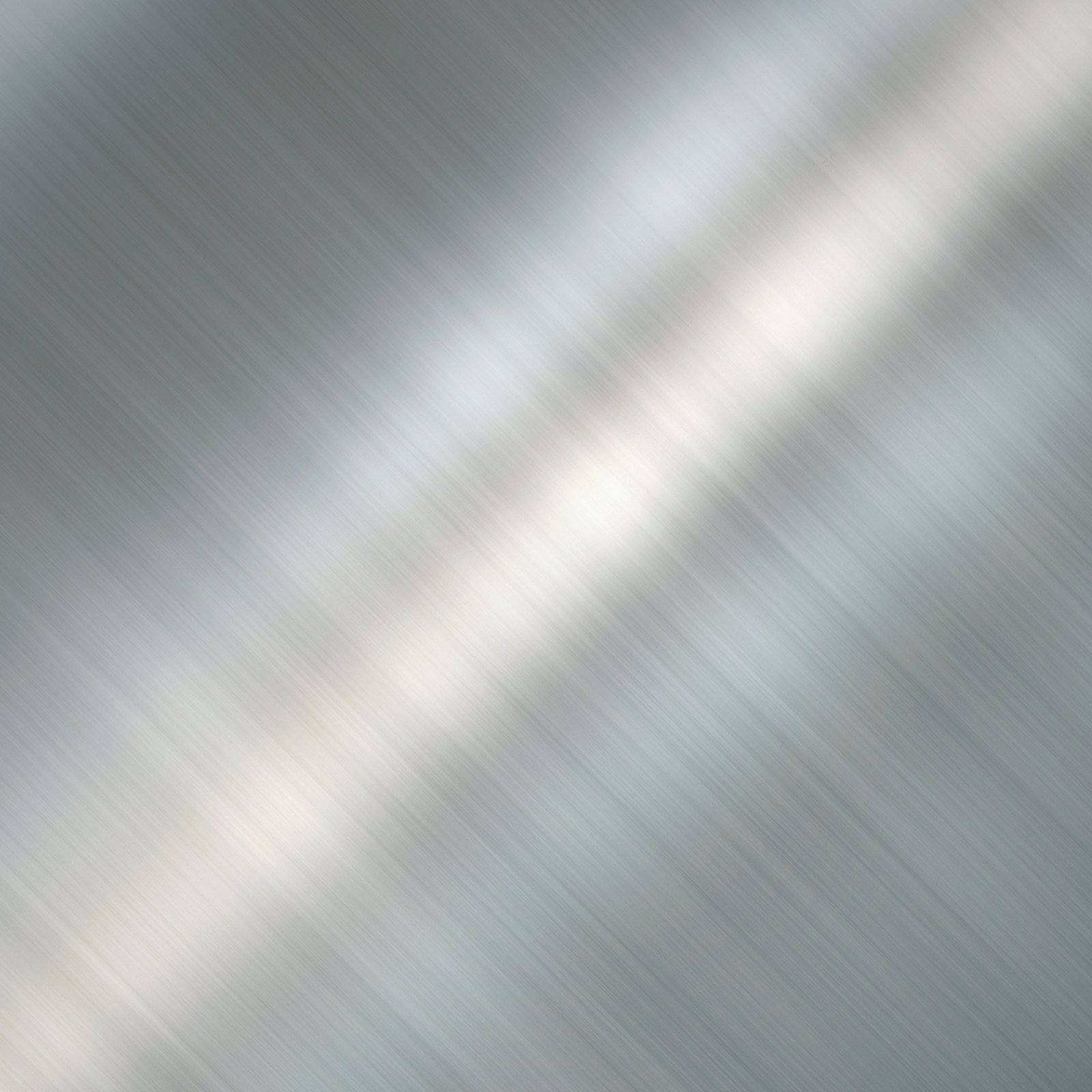
The environmental concerns surrounding conventional passivation methods are not based on abstract risks; they are rooted in the fundamental and well-understood chemistry of the processes themselves. The objective of passivation is to remove free iron from the surface of stainless steel and promote the formation of a protective chromium oxide layer. While conventional methods achieve this, they do so through highly aggressive and environmentally taxing chemical reactions. The byproducts and waste generated are not incidental but are direct and unavoidable consequences of using agents like nitric acid and, in some older formulations, chromates. Understanding this core chemical problem is essential for appreciating why the shift to greener alternatives is not merely a matter of preference but a necessary evolution in industrial finishing. The issues span air pollution, water contamination, and the creation of solid hazardous waste, each presenting a distinct and serious challenge.
Nitric Acid's Role and Its Atmospheric Byproducts
Nitric acid3 ($HNO_3$) is a powerful oxidizing agent, which is why it is so effective at passivating stainless steel. It readily dissolves free iron from the surface, allowing the chromium to react with oxygen and form a passive film. However, a significant side reaction occurs during this process. The nitric acid is reduced, producing a mixture of nitrogen oxides, commonly referred to as NOx. This includes gases like nitric oxide (NO) and nitrogen dioxide ($NO_2$), which are visible as the characteristic brown fumes above a passivation tank.
These NOx gases are potent air pollutants. In the atmosphere, they react with other compounds in the presence of sunlight to form ground-level ozone (smog), a major respiratory irritant. They also react with water, oxygen, and other chemicals to form nitric acid, which falls to the earth as acid rain. Acid rain damages forests, acidifies lakes and streams, and corrodes buildings and infrastructure. According to the U.S. Environmental Protection Agency (EPA), industrial processes are a significant source of man-made NOx emissions, and regulations like the Clean Air Act impose strict limits on how much a facility can release.
For stainless steel manufacturers, this means investing in expensive air scrubbing and ventilation systems to capture these fumes. These systems themselves consume energy and create their own waste streams (e.g., spent scrubbing solution) that require management. The chemical reaction that makes nitric acid a good passivating agent is the very same reaction that makes it an environmental liability, creating an inescapable link between its function and its polluting potential.
The Problem with Hexavalent Chromium
While less common today due to heavy regulation, some older or specialized passivation processes, particularly those enhanced with sodium dichromate, introduce an even more sinister environmental threat: hexavalent chromium (Cr6+). Sodium dichromate was often added to nitric acid baths to accelerate the passivation process and increase the resulting corrosion resistance. However, hexavalent chromium is a known human carcinogen and is extremely toxic to aquatic life.
The problem with Cr6+ is its high mobility in water and soil, allowing it to contaminate large areas if released. Accidental spills or improper disposal of rinse water containing hexavalent chromium can lead to long-term groundwater contamination, posing a severe public health risk. The cleanup of such contamination is notoriously difficult and astronomically expensive. This is why global regulations like the European Union's Restriction of Hazardous Substances (RoHS) Directive and REACH (Registration, Evaluation, Authorisation and Restriction of Chemicals) have severely restricted or outright banned the use of Cr6+ in many applications.
For any company still using or considering a process involving chromates, the regulatory risk is immense. The "cradle-to-grave" liability associated with Cr6+ means that a manufacturer is legally responsible for any environmental harm it causes, forever. This represents an unacceptable level of risk for most modern businesses, pushing them to seek safer alternatives like citric acid, which completely avoids the issue of chromium in the waste stream.
Soil and Water Contamination Pathways
The most common pathway for environmental damage from conventional passivation is through the wastewater stream. After the stainless steel parts are dipped in the acid bath, they are rinsed with water. This rinse water carries residual acid and, critically, dissolved metal ions—primarily iron, but also chromium and nickel from the stainless steel alloy itself. If this effluent is not properly treated, it poses a direct threat to aquatic ecosystems. The high acidity can kill fish and other organisms, while the dissolved heavy metals can bioaccumulate in the food chain.
Even with wastewater treatment, a sludge is produced that concentrates these heavy metals. This sludge is a solid hazardous waste that must be disposed of in a specialized, lined landfill to prevent the metals from leaching into the soil and groundwater over time. Any failure in this containment system can lead to long-term contamination of the surrounding environment.
I once consulted for a manufacturing company that had been operating for decades. An environmental audit revealed soil contamination around an old, improperly lined wastewater pond from their passivation line. The remediation cost them millions of dollars and became a major public relations crisis. This serves as a stark reminder that the environmental consequences of these chemical processes are not temporary. They can persist for decades, creating a latent liability that can surface at any time, with devastating financial and reputational consequences.
Nitric acid produces NOx emissionsTrue
Nitric acid passivation generates nitrogen oxides (NOx) as byproducts, which contribute to air pollution and acid rain.
Hexavalent chromium is harmlessFalse
Hexavalent chromium (Cr6+) is a known carcinogen and environmental hazard, strictly regulated worldwide.
How does the impact of traditional methods affect stainless steel manufacturers and users?
Are you feeling the squeeze of rising operational costs and customer demands for sustainability? The use of traditional passivation methods4 directly impacts your bottom line through high chemical and disposal costs, while also risking the loss of environmentally-conscious clients who are now auditing their supply chains.
The impact on manufacturers is multifaceted, involving direct financial burdens from waste management, capital expenditure on safety equipment, and increasing insurance premiums. For users and distributors, the impact manifests as potential supply chain disruptions, reputational risks, and a diminished ability to compete in green-conscious markets.
The entire value chain feels the pressure. At MFY, we serve as a bridge between production and application, and we see the friction clearly. A distributor in our network recently faced a challenge from a major construction client building a LEED-certified project5. The client required full material traceability and documentation of environmental compliance for all components, including the passivation of stainless steel sheets. The distributor’s previous supplier used a nitric acid process and couldn't provide the required documentation, jeopardizing a massive contract. We were able to step in and connect them with one of our production partners that uses a fully certified citric acid passivation process. This not only saved the contract but also strengthened the distributor's position as a supplier for high-value, green-certified projects. It’s a clear example of how finishing processes, once a technical footnote, are now a critical factor in market access and commercial success.
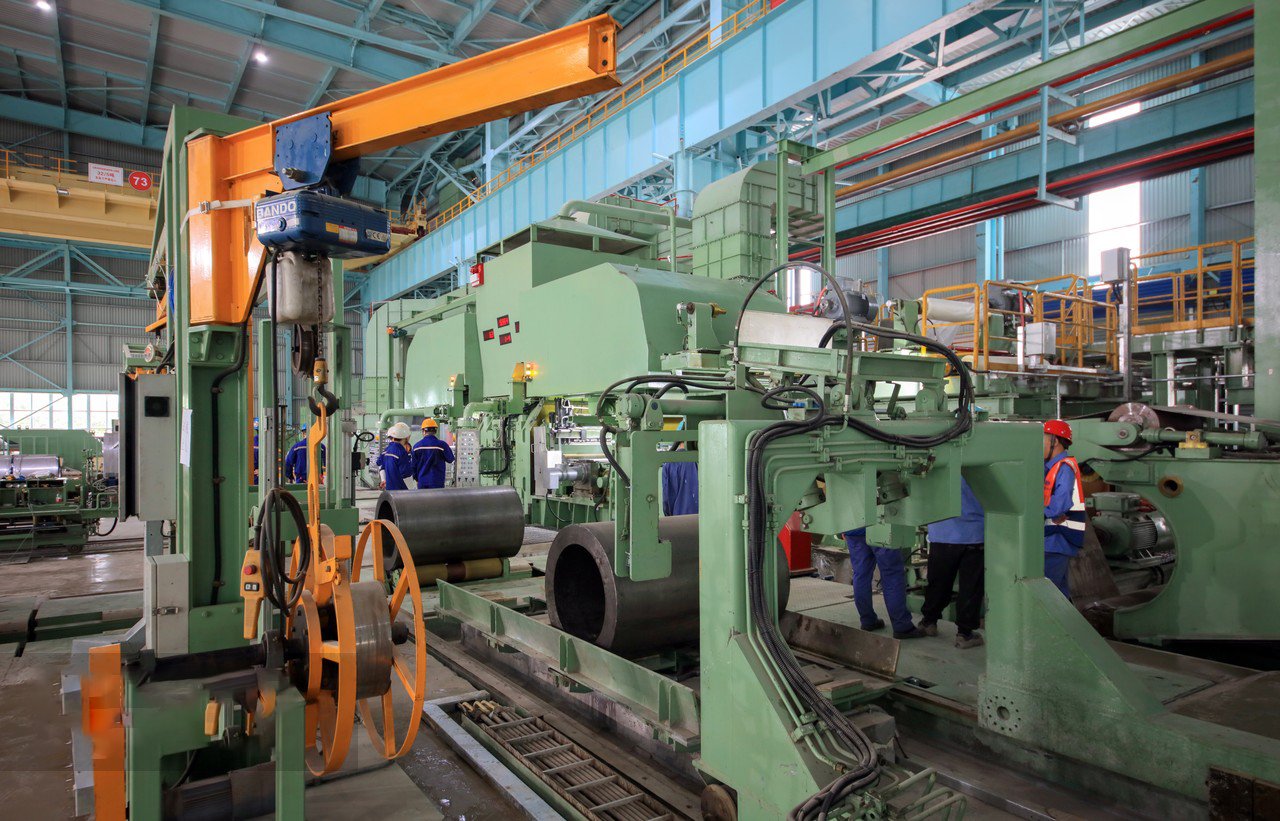
The consequences of relying on traditional passivation methods extend far beyond the chemistry lab or the factory floor; they permeate the entire business ecosystem, affecting everyone from the raw material producer to the final end-user. For manufacturers, these methods create a constant state of operational and financial pressure. For distributors, contractors, and equipment integrators, they introduce risks and inefficiencies into the supply chain. In today's market, where efficiency, resilience, and sustainability are paramount, the continued use of these outdated processes acts as a significant drag on competitiveness. The impact can be dissected into three key areas: eroding financial performance, creating operational bottlenecks, and damaging market reputation, all of which are interconnected and mutually reinforcing. As a partner in our clients' supply chains, we at MFY have observed these impacts firsthand and have worked to provide solutions that mitigate these risks.
Eroding Competitive Advantage in Green Markets
The global market is undeniably shifting towards sustainability. End-users, especially in sectors like food and beverage, pharmaceuticals, and architectural design, are increasingly demanding products with a verifiable green pedigree. This is not just about corporate image; it is often a strict requirement driven by regulations and consumer preferences. A stainless steel manufacturer or distributor whose products rely on traditional, polluting finishing processes is at a significant disadvantage in this environment. They may be excluded from tender lists for green building projects or lose contracts with multinational corporations that have stringent supplier sustainability codes.
Consider the case of a client of ours, an equipment integrator providing systems for food processing plants in Europe. Their customers operate under the strict food safety and environmental standards of the EU. They cannot afford to have any questions raised about the materials used in their processing lines. Our client made the strategic decision to source exclusively from suppliers who use green passivation, like citric acid, for their stainless steel components. They now use this "certified green supply chain" as a key marketing tool, which has helped them win business over competitors who cannot provide the same level of assurance.
This trend is creating a two-tiered market. In one tier, companies compete on price alone, often using older, less sustainable methods. In the other, higher-value tier, companies compete on quality, safety, and sustainability. Relying on traditional passivation effectively locks a business out of this growing, higher-margin market, limiting its growth potential and eroding its long-term competitive advantage.
Operational Inefficiencies and Rising Overhead
Traditional passivation methods are operationally intensive and inherently inefficient compared to modern alternatives. The use of highly hazardous nitric acid necessitates significant capital investment in infrastructure, including acid-resistant tanks and plumbing, robust ventilation and fume scrubbing systems, and specialized emergency response equipment like eyewash stations and chemical showers. These are not one-time costs; they require ongoing maintenance, energy consumption, and periodic replacement. This inflates the factory's overhead and complexity.
Furthermore, the process itself introduces bottlenecks. Nitric acid passivation can be slower than alternatives, and the extensive safety protocols required can reduce overall throughput. Employee training is more complex and time-consuming. The biggest operational drag, however, is waste management. The need to collect, test, treat, and arrange for the disposal of hazardous wastewater and sludge adds multiple non-value-added steps to the production process. These steps consume labor, time, and resources that could be better deployed elsewhere.
The financial burden is significant. The table below provides a simplified comparison of the typical operational cost factors between traditional and green passivation. While the initial cost of nitric acid per gallon may seem lower, the total cost of ownership is often substantially higher once all associated expenses are factored in. This hidden overhead directly eats into the manufacturer's profit margins.
| Cost Factor | Traditional (Nitric Acid) | Green (Citric Acid) |
|---|---|---|
| Chemical Cost | Low-Medium | Medium |
| Safety Infrastructure | High (Ventilation, PPE) | Low (Standard PPE) |
| Waste Disposal | High (Hazardous Waste) | Low (Often biodegradable) |
| Regulatory Burden | High (Permitting, Reporting) | Minimal |
| Cycle Time | Slower | Faster |
| Total Cost of Ownership | High | Low |
Supply Chain Vulnerabilities and Reputational Damage
For distributors, contractors, and other downstream users, sourcing from manufacturers who use traditional methods introduces significant supply chain risk. As environmental regulations tighten globally, a supplier could face sudden operational restrictions or even a shutdown, leading to unexpected and severe disruptions. Imagine an engineering and construction contractor in the middle of a major project whose supply of critical stainless steel pipe is cut off because the manufacturer violated an emissions permit. This type of vulnerability is a major concern for any business that relies on just-in-time delivery and predictable lead times.
At MFY, we emphasize supply chain resilience. A key part of that is ensuring our production partners have stable, compliant, and future-proofed operations. Green passivation is a key indicator of this operational maturity. It signals that a manufacturer is proactive, not reactive, about regulatory trends and is invested in long-term stability.
ly, reputational risk is a powerful, if intangible, factor. In the age of social media and corporate transparency, a single environmental or safety incident at a supplier's facility can cause reputational damage to all of its customers. Being associated with a polluting supplier can tarnish a company's brand, alienate customers, and attract unwanted attention from activists and regulators. By proactively choosing suppliers who have adopted green finishing processes, users not only secure their supply chain but also bolster their own corporate image as responsible and sustainable enterprises.
Traditional passivation increases operational costsTrue
Nitric acid processes require expensive safety infrastructure, waste management, and regulatory compliance, driving up total costs.
Green passivation slows production cyclesFalse
Citric acid processes often have faster cycle times than traditional methods due to simpler safety protocols and waste handling.
What eco-friendly alternatives are available for stainless steel passivation?
Searching for a better, greener way to finish stainless steel? You're frustrated by the environmental risks and high costs of nitric acid. The good news is that powerful, eco-friendly alternatives6 exist that can deliver superior results without the hazardous drawbacks, moving your operations forward.
The most prominent and widely adopted eco-friendly alternative is citric acid passivation. This method uses a biodegradable, organic acid derived from citrus fruits to achieve the same, or even superior, level of corrosion resistance as traditional methods, but with significant environmental and safety benefits.
These alternatives are not just theoretical; they are proven, industrial-scale solutions. As a company with deep roots in stainless steel production and trade, we at MFY have championed the adoption of citric acid passivation within our network. We’ve seen firsthand how it transforms a company's safety profile and environmental footprint overnight. A tube manufacturing client of ours in Russia was hesitant to switch, fearing a drop in quality. We facilitated a pilot program, testing their products passivated with both nitric and citric acid. The salt spray test results were conclusive: the citric acid-passivated tubes met and, in some cases, exceeded the performance of the nitric acid ones. Seeing the data, coupled with the immediate elimination of hazardous fume management, made their decision to switch simple and final. This is the kind of practical, data-driven validation that is winning over the industry, one manufacturer at a time.
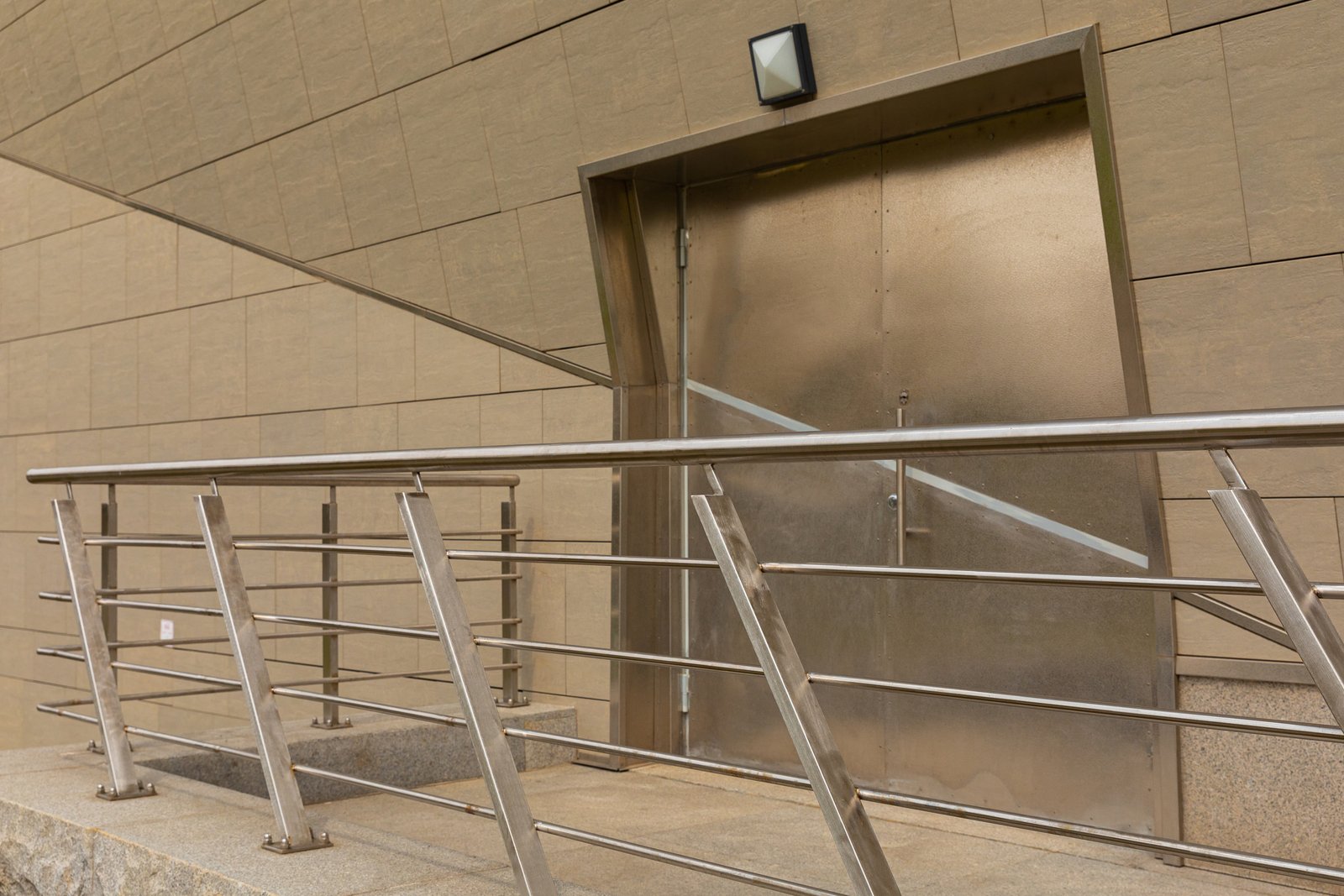
The search for eco-friendly passivation alternatives has been driven by a combination of regulatory pressure, economic necessity, and a growing corporate responsibility ethos. For years, the industry operated under the assumption that the harsh chemistry of nitric acid was a necessary evil to achieve effective corrosion resistance on stainless steel. However, extensive research and development of green alternatives7 have shattered this myth, leading to the commercialization of several green alternatives that offer comparable or even superior performance without the associated environmental baggage. The most mature and widely accepted of these is citric acid passivation, but other technologies like electropolishing and emerging plasma-based treatments are also carving out important niches. These methods represent a fundamental shift in finishing philosophy, moving from aggressive, subtractive chemistry to more sophisticated, controlled surface treatments that are inherently safer and more sustainable.
Citric Acid Passivation: A Deep Dive into the Chemistry
Citric acid, an organic acid naturally found in fruits like lemons and oranges, has emerged as the leading green alternative to nitric acid. Its effectiveness lies in its function as a chelating agent. Unlike nitric acid, which aggressively dissolves the surface, citric acid selectively removes the free iron ions from the surface of the stainless steel. It does this by forming a stable, water-soluble complex (iron citrate) with the iron ions, effectively plucking them from the surface without significantly attacking the base metal, including the essential chromium. This gentle removal of iron exposes the chromium at the surface, allowing it to naturally and rapidly oxidize to form a dense, highly protective chromium oxide ($Cr_2O_3$) passive layer.
The benefits of this mechanism are numerous. First, the process is much safer for workers. Citric acid is non-toxic, non-corrosive to skin in typical concentrations, and does not produce hazardous fumes. This eliminates the need for expensive fume scrubbing systems and reduces the requirement for extensive PPE. Second, it is environmentally benign. Citric acid is readily biodegradable, and the rinse water typically does not require hazardous waste treatment (though local regulations on metal content should always be checked). In many cases, it can be treated using standard wastewater systems.
From a performance standpoint, studies, including those compliant with ASTM A967 standards, have repeatedly shown that citric acid passivation produces a passive layer that is as good as, or often superior to, that formed by nitric acid. This is because the gentler action of citric acid results in a higher chromium-to-iron ratio on the surface, creating a more robust and corrosion-resistant passive film. For our manufacturing clients, this means they can achieve a higher quality finish while simultaneously reducing costs and eliminating environmental risks—a clear win-win scenario.
Electropolishing as a Green Alternative
Electropolishing is another powerful, albeit different, method for finishing stainless steel that offers significant environmental benefits. It is an electrochemical process, often described as the reverse of electroplating. The stainless steel part is submerged in an electrolyte bath and subjected to a DC current, with the part acting as the anode. The process removes a microscopic layer of surface material, resulting in an exceptionally smooth, clean, and passive surface. The process preferentially removes microscopic high points on the surface, leading to a leveling and brightening effect.
From an environmental perspective, while the electrolytes used are acidic, they are typically phosphoric and sulfuric acid blends which are generally less hazardous than nitric acid and do not produce NOx fumes. The baths are also very long-lasting, and the process is highly controlled, which minimizes waste. The primary waste product is a sludge containing the metals removed from the part, which must be managed as hazardous waste, but the volume is typically much lower over time compared to the constant wastewater stream from acid dipping processes.
The key advantage of electropolishing is the superior surface finish it creates. It is the gold standard for applications in the pharmaceutical, semiconductor, and food and beverage industries, where an ultra-clean, crevice-free surface is required to prevent microbial growth. A client of ours who manufactures high-purity valves and fittings for the biotech industry relies exclusively on electropolishing. For them, it is not just a finishing step but a critical quality assurance process. It demonstrates how a green alternative can also be a premium, high-performance solution that enables access to the most demanding markets.
Emerging Technologies: Plasma and Laser Passivation
Looking toward the future, several innovative, water-free and chemical-free technologies are emerging as viable passivation methods. Atmospheric-pressure plasma passivation is one such technique. This process uses a jet of ionized gas (plasma) to clean and activate the stainless steel surface. The plasma treatment effectively removes surface contaminants and free iron, and the subsequent exposure to oxygen in the air forms the passive layer. The process is fast, highly controlled, and completely dry, eliminating any concerns about wastewater.
Similarly, laser-based surface treatments are being developed. High-powered lasers can be used to precisely melt and re-solidify a microscopic surface layer of the stainless steel. This process, known as laser surface melting, creates a very homogenous and refined microstructure that is inherently more corrosion-resistant. It can also be used to selectively remove contaminants and form a stable oxide layer.
While these technologies are currently more specialized and have a higher initial capital cost, they represent the next frontier in eco-friendly finishing. They offer the potential for ultimate process control and the complete elimination of chemical consumables and waste streams. For industries like medical device manufacturing or aerospace, where precision and absolute cleanliness are paramount, these water-free and chemical-free methods hold immense promise. At MFY, we are closely monitoring the development and industrialization of these technologies, as they align perfectly with our vision of driving innovation throughout the stainless steel supply chain.
Electropolishing creates ultra-smooth surfacesTrue
The electrochemical process removes microscopic high points, resulting in superior surface finish ideal for sensitive industries.
Plasma passivation requires waterFalse
Atmospheric-pressure plasma passivation is a completely dry process using ionized gas, eliminating wastewater concerns.
How can companies implement green passivation techniques in their stainless steel finishing processes?
Ready to make the switch to a greener process but unsure where to start? The path to implementation can seem complex, involving technical validation, process changes, and team training. A clear, phased approach is needed to ensure a smooth transition without disrupting production or compromising quality.
Successfully implementing green passivation involves a structured, three-phase approach: first, a thorough audit of your current process and goals; second, selecting the right green alternative and conducting pilot tests; and third, full-scale implementation accompanied by comprehensive training and quality control measures.
This transition is a journey we frequently guide our clients through. The key is to treat it not just as a chemical substitution but as a process improvement project. One of our partners, a manufacturer of architectural stainless steel panels8, provides a perfect example. They were under pressure from architects to provide products with a lower environmental impact. We worked with them to systematically transition their large-scale passivation line from nitric to citric acid. The process began with a deep analysis of their existing setup and ended with a fully commissioned and validated new system. The most rewarding part for me was seeing their team's excitement—not only were they meeting customer demands, but they had also eliminated the daily hazards of working with nitric acid. Their success underscores that with a clear plan, any company can make this beneficial change.
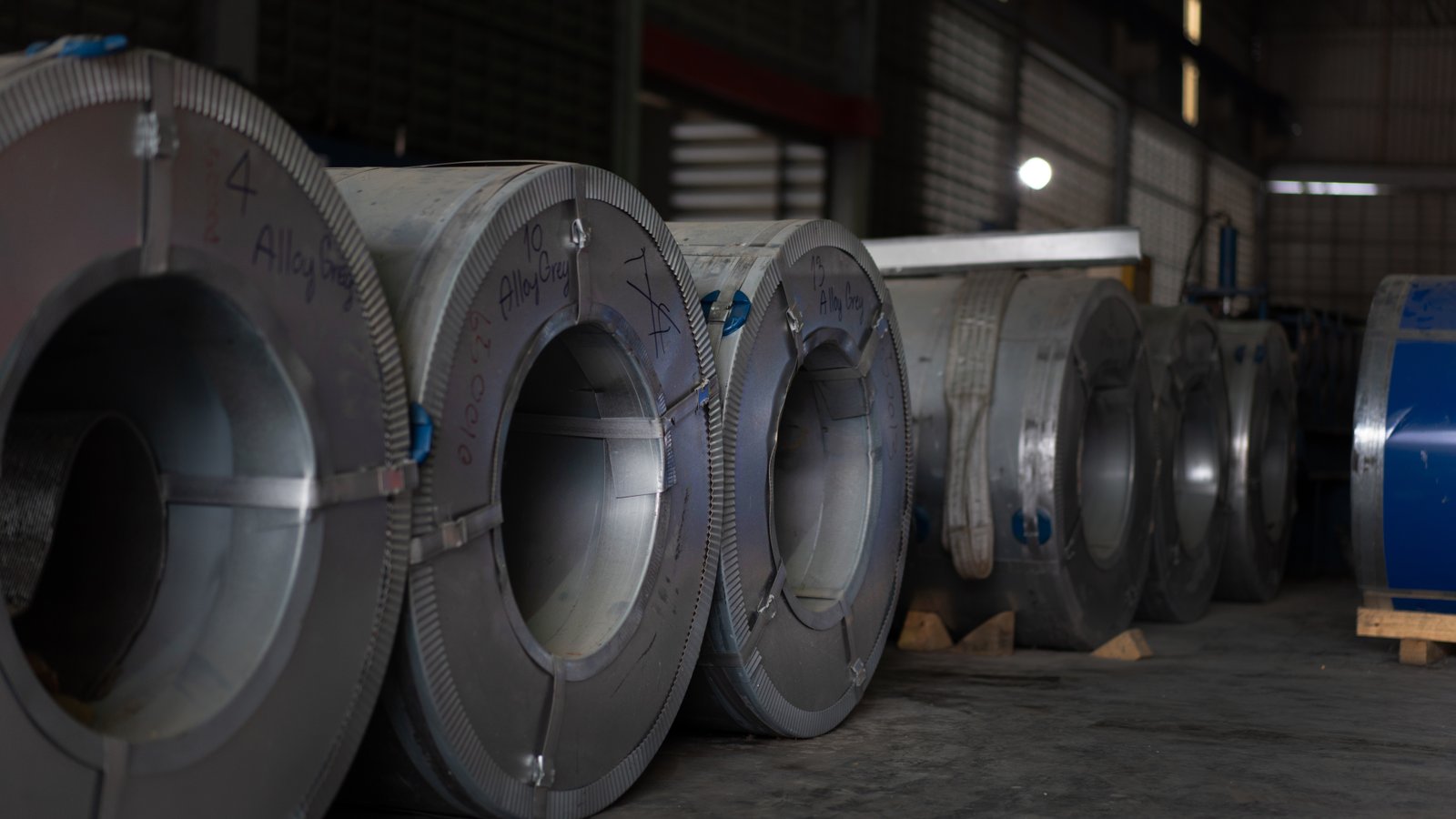
The transition from a traditional, hazardous passivation process to a modern, eco-friendly one is a significant operational upgrade that requires careful planning and execution. It's more than just swapping one chemical for another; it's about re-engineering a critical part of the production workflow to be safer, more efficient, and more sustainable. A successful implementation hinges on a methodical, phased approach that mitigates risk, ensures quality, and achieves buy-in from all stakeholders, from the plant floor operators to senior management. Drawing from my experience helping MFY's clients navigate this change, I have found that breaking the project down into three distinct, manageable phases—Audit & Planning, Selection & Piloting, and Implementation & Control—is the most effective path to a seamless and successful transition. This structured methodology ensures that all technical, operational, and commercial aspects are addressed, leading to a robust and future-proof finishing process.
Phase 1: Auditing Your Current Process and Identifying Gaps
The first step in any improvement project is to fully understand the current state. This involves a comprehensive audit of your existing passivation line9. You need to document everything: the specific chemicals used (e.g., nitric acid concentration, additives), the process parameters (time, temperature), the equipment (tanks, hoists, ventilation), the safety protocols in place, and the workflow from start to finish. Most importantly, you must quantify the true costs associated with this process. This includes not just the direct cost of the acid, but also the costs of water consumption, energy for heating and ventilation, labor, PPE, and, crucially, hazardous waste transportation and disposal.
During this phase, I advise clients to identify the specific "pain points" they want to solve. Is the primary driver cost reduction? Is it to eliminate a specific workplace safety hazard? Or is it to meet the sustainability requirements of a key customer? A construction materials distributor we work with in the Middle East, for instance, identified their primary goal as achieving a "Green Supplier" certification to win government infrastructure contracts. This clear objective guided all subsequent decisions.
This audit provides the baseline data against which the new process will be measured. It helps build the business case for the change by highlighting the hidden costs and risks of the status quo. It also identifies any equipment or procedural gaps that will need to be addressed during the implementation of the new green process. For example, will your existing tanks work with the new chemistry, or do they need to be replaced?
Phase 2: Selecting the Right Green Alternative and Pilot Testing
With a clear understanding of your needs and baseline performance, you can select the most appropriate green alternative. For the vast majority of stainless steel applications, citric acid passivation is the leading candidate due to its proven performance, safety, and cost-effectiveness. However, for applications requiring the absolute highest level of surface smoothness and purity, electropolishing10 might be the better, albeit more capital-intensive, choice. The selection should be based on the goals identified in Phase 1. Partnering with a knowledgeable supplier like MFY can be invaluable here, as we can provide data and case studies from similar applications.
Once a technology is selected, you absolutely must not skip the pilot testing phase. This is where you validate the process in a controlled environment. This can be done in a lab or on a small scale on your own shop floor. The goal is to test the new chemistry on your specific stainless steel grades and parts to confirm that it meets your quality standards. This involves passivating sample parts and then subjecting them to rigorous quality control checks, such as salt spray testing (per ASTM B117) or copper sulfate testing, to verify the integrity of the passive layer.
During a transition for a stainless steel coil service center, we facilitated a pilot test where coils processed with citric acid were sent to their most demanding customer. The customer's own quality lab confirmed that the corrosion resistance was identical to their previous nitric acid-passivated material. This third-party validation was the final piece of evidence needed for management to approve the full-scale project. Pilot testing de-risks the entire project and builds confidence across the organization.
Phase 3: Full-Scale Implementation, Training, and Quality Control
After successful pilot testing, you can move to full-scale implementation. This involves preparing the production line, which might include cleaning or replacing tanks, adjusting plumbing, and updating control systems for new time and temperature parameters. A detailed project plan with clear timelines and responsibilities is essential to minimize production downtime during the changeover. It's often best to schedule this during a planned maintenance shutdown.
Arguably the most critical element of this phase is training. Your operators and quality control personnel need to be thoroughly trained on the new process. This includes understanding the new chemistry, the correct operating parameters, the new safety procedures (which are often much simpler), and the specific quality control checks required. The training should emphasize not just the "how" but also the "why"—explaining the benefits of the new process in terms of safety and environmental impact can foster strong team buy-in and ownership.
ly, once the new line is commissioned, you must establish a robust quality control (QC) protocol. This involves regular monitoring of the bath chemistry and routine testing of finished products to ensure consistent performance. This ongoing QC provides the data to prove that your process remains in control and continues to meet the required specifications. By embedding this discipline from day one, you ensure the long-term success and reliability of your new, green passivation process, turning a regulatory challenge into a sustainable competitive advantage.
Citric acid is a green alternativeTrue
Citric acid is widely recognized as an eco-friendly substitute for nitric acid in passivation processes, offering comparable performance with lower environmental and safety risks.
Pilot testing is optionalFalse
Pilot testing is a critical phase that validates the new process's effectiveness on specific materials and builds organizational confidence before full-scale implementation.
Conclusion
Embracing green passivation is more than an environmental choice; it is a strategic business decision. By replacing hazardous traditional methods with safer, cost-effective alternatives like citric acid, you enhance safety, reduce costs, and gain a powerful competitive advantage in a sustainability-focused global market.
-
Learn how green passivation improves sustainability and cost-effectiveness in stainless steel sheet finishing ↩
-
Understand hazardous waste management protocols for passivation processes ↩
-
Discover the atmospheric pollutants released by nitric acid during passivation ↩
-
Learn about passivation processes and their impact on stainless steel quality and sustainability. ↩
-
Discover how LEED certification influences construction projects and material sourcing. ↩
-
Discover sustainable methods to reduce environmental impact in stainless steel processing ↩
-
Explore recent advances and innovative methods in eco-friendly stainless steel finishing ↩
-
Learn about the environmental advantages and applications of architectural stainless steel panels. ↩
-
Understand the components and purpose of a stainless steel passivation line. ↩
-
Explore the benefits of electropolishing for surface purity and smoothness. ↩
Have Questions or Need More Information?
Get in touch with us for personalized assistance and expert advice.
